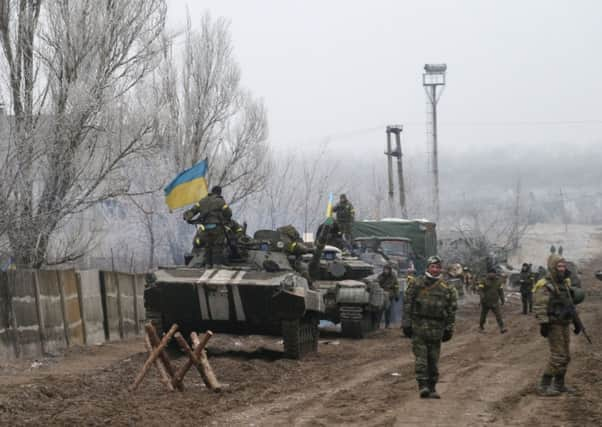Comment: Turmoil fomented by clash of East v West


As the non-Russian republics broke free in the Soviet collapse and eastern European Soviet satellite countries snapped the chains of Moscow’s dominion, common wisdom held that the Cold War was over. The victors: the United States and its European allies – bound together in the Nato alliance to block further Soviet expansion in Europe after the Second World War.
Since the Soviet collapse – as Moscow had feared – that alliance has spread eastward, expanding along a line from Estonia in the north to Romania and Bulgaria in the south. The Kremlin claims it had western assurances that would not happen. Now, Moscow’s only buffers to a complete Nato encirclement on its western border are Finland, Belarus and Ukraine.
Advertisement
Hide AdAdvertisement
Hide AdThe Kremlin would not have to be paranoid to look at that map with concern. And Russia reacted dramatically early last year. US-Russian relations have fallen back into the dangerous nuclear and political standoff of the Cold War years before the Soviet collapse.
The turmoil began when Ukraine’s corrupt, Russia-friendly president Viktor Yanukovich backed out of an agreement with the European Union for closer trade and political ties and instead accepted Russian guarantees of billions of dollars in financial aid. That led to prolonged pro-western demonstrations in the Ukrainian capital, Kiev. The upheaval caused Yanukovich to flee to Moscow a year ago.
When a new, pro-western government took power in Ukraine, Russia reacted by seizing the Crimean peninsula and making it once again a part of Russia.
Soviet leader Nikita Khrushchev had transferred the strategic region from Russian federation control to the Ukraine republic in 1954. Crimea remained base to Russia’s Black Sea fleet. Ethnic Russians are a majority of the population.
Also, Russian-speaking separatists in eastern Ukraine – along the Russian border – began agitating, then fighting to break free of Kiev’s control, variously demanding autonomy, independence or to become a part of Russia. As separatist fighters – the West claims they have been given Russian heavy arms and are backed by Russian forces – pushed deeper into Ukraine, a September peace conference drew up plans for a ceasefire and eventual steps toward a political resolution to end the conflict which has so far claimed 5,300 lives.